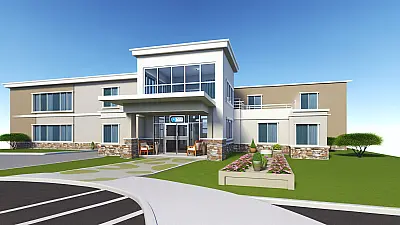TYRONE, PA - A recent inspection at Cedarwood Rehabilitation & Healthcare Center revealed systematic failures in the facility's quality assurance program, with inspectors finding that the nursing home's oversight committee failed to implement effective measures to maintain regulatory compliance and address ongoing safety issues.

Quality Oversight System Breaks Down
The most significant violation centered on the facility's Quality Assurance and Performance Improvement (QAPI) committee, which federal regulations require all nursing homes to maintain. This committee serves as the facility's primary mechanism for identifying problems, developing solutions, and ensuring ongoing compliance with healthcare regulations.
Inspectors found that despite previous citations for accident hazards during surveys conducted in December 2024, the facility's QAPI committee had not successfully implemented corrective measures. The committee had promised to complete regular audits and report findings for review, but follow-up inspections revealed these quality improvement efforts had failed to address the underlying safety concerns.
Medical Significance of Quality Assurance Failures
Quality assurance programs in nursing homes serve as critical safety nets for vulnerable residents who often have multiple medical conditions and limited ability to advocate for themselves. When these oversight systems fail, residents face increased risks of accidents, medication errors, infections, and other preventable complications.
The QAPI system is designed to create a continuous cycle of monitoring, evaluation, and improvement. Federal regulations require facilities to track patterns of care, identify areas needing improvement, and implement evidence-based interventions. When this system breaks down, problems that could be caught early and corrected instead persist and potentially worsen.
Effective quality assurance programs should include regular data collection on resident outcomes, systematic review of incidents and near-misses, staff training updates, and implementation of corrective actions with measurable results. The absence of these elements leaves residents vulnerable to preventable harm.
Industry Standards and Best Practices
Healthcare facilities are required to maintain robust quality improvement programs that meet specific federal standards. These programs must be comprehensive, ongoing, and demonstrate measurable improvements in resident care and safety outcomes.
The QAPI approach requires facilities to focus on systems and processes rather than individual incidents. When accident hazards are identified, facilities should conduct root cause analyses, implement systemic changes, train staff on new procedures, and continuously monitor effectiveness through data collection and analysis.
Successful quality assurance programs typically involve multidisciplinary teams including nursing staff, physicians, pharmacists, dietary professionals, and administrative personnel. These teams meet regularly to review data, discuss trends, and implement evidence-based interventions to improve care quality and resident safety.
Regulatory Response and Ongoing Oversight
The inspection findings represent a continuation of quality assurance challenges at the facility. Previous surveys had identified accident hazards, prompting the facility to develop a plan of correction that included commitments to enhanced auditing and committee oversight.
However, the current survey results indicate these promised improvements were not effectively implemented, demonstrating a pattern of inadequate follow-through on quality improvement initiatives. This type of recurring deficiency often triggers increased regulatory scrutiny and may result in more frequent inspections or additional oversight measures.
Additional Issues Identified
The inspection narrative indicates the facility received citations under multiple regulatory tags, suggesting quality assurance failures may have affected various aspects of resident care and facility operations. These additional violations were documented as part of the comprehensive survey process that evaluates all aspects of nursing home operations.
The scope of quality assurance deficiencies often extends beyond single incidents to encompass systematic issues affecting multiple areas of care delivery, resident safety protocols, and staff performance monitoring.
Federal and state oversight agencies use these inspection findings to determine appropriate enforcement actions, which may include monetary penalties, increased monitoring, or requirements for additional staff training and system improvements. The facility must submit an acceptable plan of correction addressing all identified deficiencies before the case can be considered resolved.
The ongoing nature of these quality assurance challenges underscores the importance of effective leadership and systematic approaches to continuous improvement in long-term care settings.
Full Inspection Report
The details above represent a summary of key findings. View the complete inspection report for Epworth Healthcare and Rehabilitation Center from 2025-01-10 including all violations, facility responses, and corrective action plans.
💬 Join the Discussion
Comments are moderated. Please keep discussions respectful and relevant to nursing home care quality.